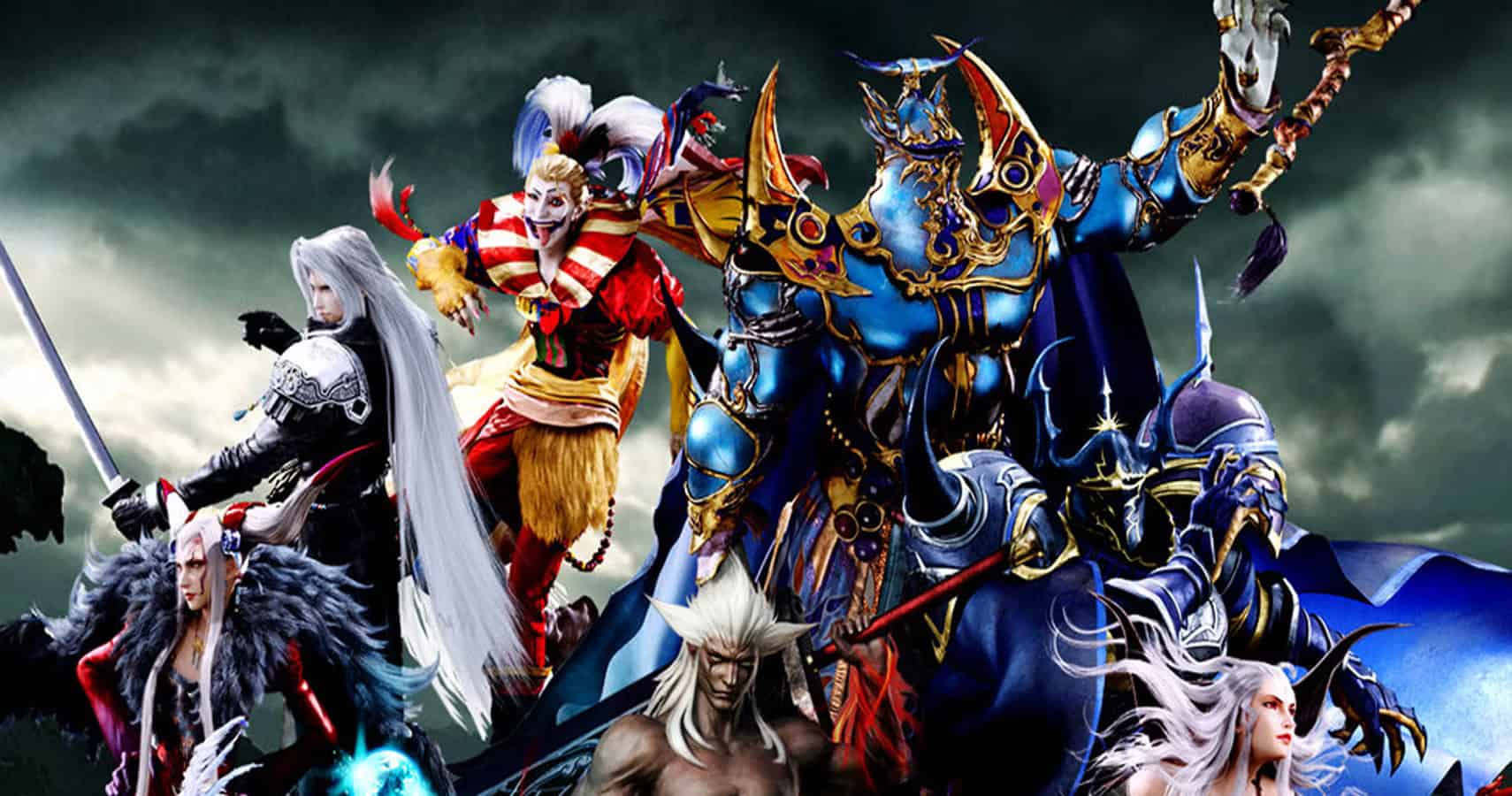The general rule of thumb for storytelling is that if the story has a great and compelling hero, it must also have an equally compelling and interesting villain. With the Final Fantasy series at least partially defined by each game’s protagonist, it stands to reason that each entry in the legendary franchise also has some of the best video game villains to ever appear in the medium. Evil entities that are physical manifestations of darkness, genetically-engineered demigods, or psychopathic narcissists that just want to watch the world burn; Final Fantasy villains are just as, if not more, compelling than the heroes that they challenge throughout the tale each game’s narrative weaves.
Still, there are those villains who appear every so often that ultimately worm their way into the hearts and minds of players for how well they’re written and how much we can empathize with their point of view. Some of the greatest villains in the Final Fantasy series count themselves into this category for the many ways we can understand their motivations and desires. Even if they go about achieving their goals in the most dastardly way possible, there are times where we can agree with their motivations. If that’s not the sign of a great villain, I don’t know what is, and several of the “big bads” on this list aren’t just great villains, they’re arguably the best characters in their respective games.
16. Cloud of Darkness (Final Fantasy XI)
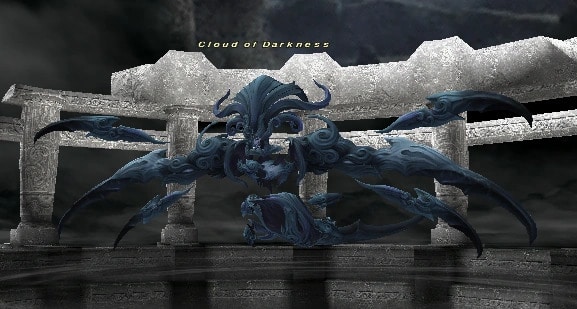
After first appearing as the main villain of Final Fantasy III (more on that later), Cloud of Darkness makes her first series reappearance as the primary antagonist of Final Fantasy XI‘s final main story content, Rhapsodies of Vana’diel. This version of the Cloud of Darkness is a primordial being who resides between worlds, hungry to extinguish all life and light in its path to allow its lifeless realm of Escha to consume all. The Cloud of Darkness seeks to return the realm of Vana’diel to a time before existence, where the entity was the sole deity existing within the Void.
In terms of main villains, the Cloud of Darkness definitely has plenty of esoteric lore that helps to propel her to being one of the more powerful malicious forces in the series, but she is distinctly lacking in personality and agency. Like some of the other villains that land lower on this list, she represents a great threat to the characters of her respective Final Fantasy, but is an otherwise uninteresting villain. She’s even outdone by her first appearance in Final Fantasy III, making it a shame that there wasn’t more done to personify her as a threat in Final Fantasy XI.
15. The Emperor (Final Fantasy II)
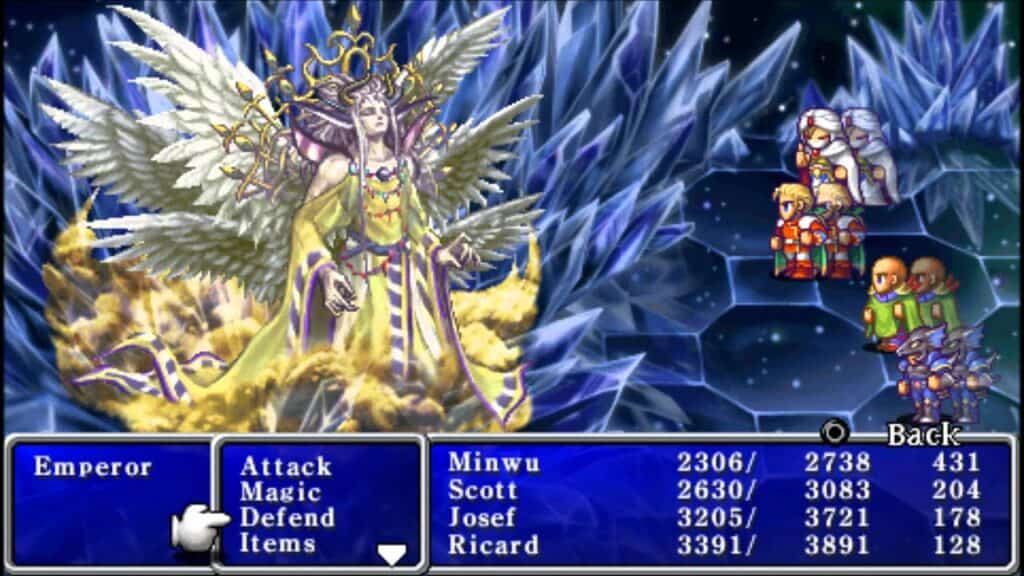
It’s no secret that Final Fantasy has long taken some story inspiration from George Lucas’ sweeping mythology behind the Star Wars universe. Going back to the series’ second entry, the entire plot of Final Fantasy II centers around a band of rebels trying to take down an evil empire. And at the head of this empire is the enigmatic and flamboyant Emperor. He edges out a slight win over Final Fantasy XI‘s Cloud of Darkness thanks to the bits of personality that shine through in his interactions with our heroes, but otherwise his goal is simply power at any cost.
That said, things get a lot more interesting after players are successful in stopping the empire and turning their long lost companion back to their side. After seemingly defeating the Emperor, he literally goes to Hell and back in order to obtain ultimate power in exchange for his soul. Following this dramatic and terminal transformation, the Emperor awaits final confrontation with Firion and his companions in the realm of Pandemonium – the physical manifestation of the Emperor’s madness and hubris. What transpires here is a final encounter where each phase shows just how far the Emperor was willing to jettison his humanity for the promise of ultimate power.
14. Garland/Chaos (Final Fantasy)
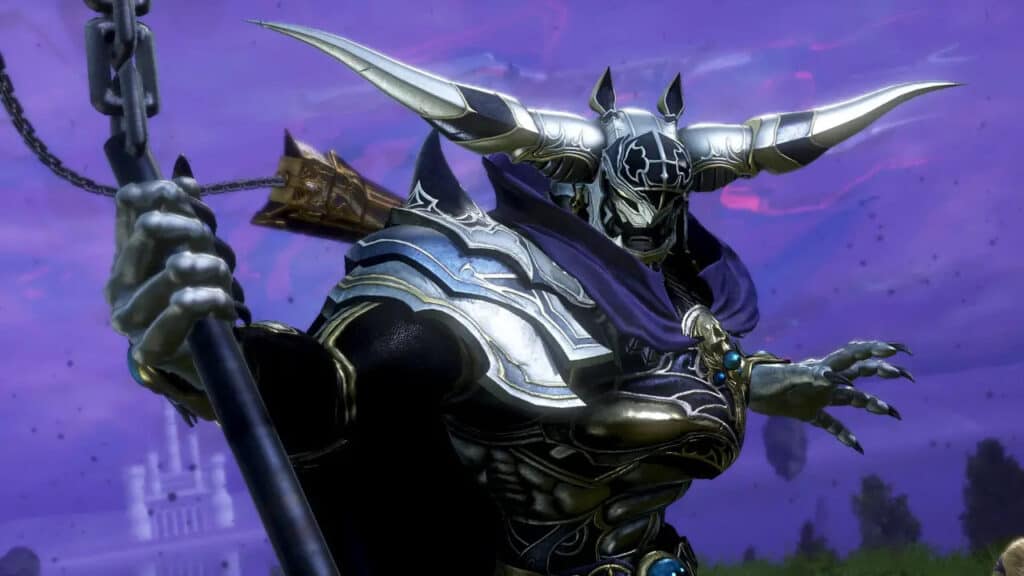
If Final Fantasy II chooses to ape Star Wars‘ Emperor for its main antagonist, it should come as no surprise that the original Final Fantasy uses Darth Vader for its villainous template. Garland, the main villain of the original Final Fantasy, was once the greatest knight in all of Cornelia until his pride led him to seek out power that was beyond his grasp. This leads him to kidnap Princess Sarah and fight against the Warriors of Light, who he traps in a thousand-year time loop to prevent them from interfering with his plan.
Of course, the main journey players take in Final Fantasy pits them against first the Four Fiends and then Garland himself, whose transformation into Chaos personified is complete after 1000 years of accumulating power. The Warriors of Light are successful in breaking the time loop and felling Garland/Chaos, but what remains is an incredibly iconic first villain who does something other villains in the franchise have yet to do. Some of the big bads on this list kill party members, destroy the world, or even switch sides, but none trap the heroes in a neverending cycle of conflict and rebirth. For that, Garland earns a bit of a higher spot despite his lack of characterization.
13. Galenth (Final Fantasy XIII)
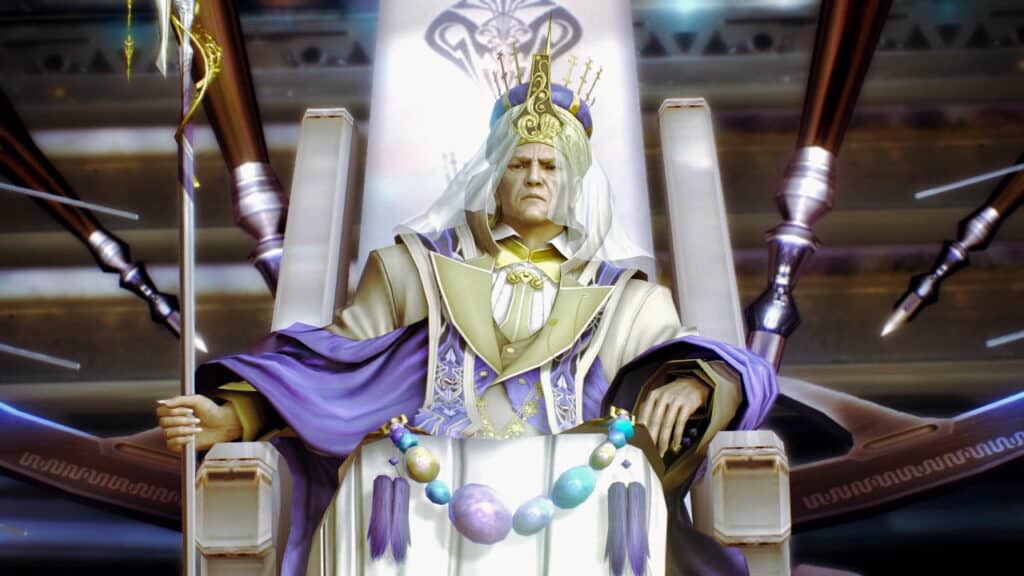
Otherwise known as Barthandelus, Galenth Dysley is the main villain of Final Fantasy XIII and the leading figure of that game’s Sanctum. As one of the Fal’Cie, he wishes to use humans as a means to open Etro’s Gate: the doorway to the Unseen Realm where the Fal’Cie deity is believed to reside. To this end, he will stop at nothing, going to increasingly cruel and insane lengths to achieve his goal. Throughout Final Fantasy XIII, he continually taunts, misdirects, and manipulates the party to play directly into his devious plan, placing all of Cocoon at risk in the process.
Final Fantasy XIII might not be one of the fan-favorite Final Fantasy games but Galenth is an incredible villain, showcasing all of the characteristics that fans often associate with some of the series’ best. He’s callous, narcissistic, and ultimately blind in his ambition to achieve his goal. While he may not be likable, and it’s obvious that his methods are disastrous, he’s such a despicable foe who is incredibly satisfying once you put a stop to his malicious plans.
12. Cloud of Darkness (Final Fantasy III)
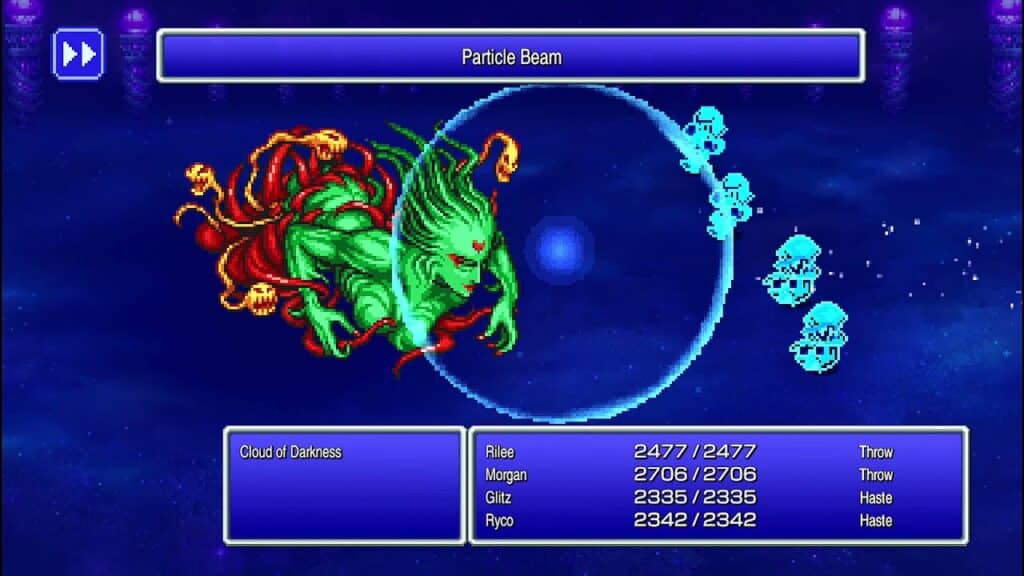
Prior to her appearance in Final Fantasy XI (and beyond), the Cloud of Darkness first rears her ugly head at the climactic conclusion of Final Fantasy III. While the original Final Fantasy features a somewhat threadbare story that mostly paints in broad strokes, Final Fantasy II significantly elevates the series’ storytelling to feature specific heroes, meaningful side characters, and an enigmatic villain who initiates the story’s conflict and continually moves it forward. Final Fantasy III, on the other hand, sits somewhere between these two, with the heroes existing as a blank slate for the player to build their perfect custom RPG party and the side characters taking most of the spotlight.
One of these is the game’s presumed villain Xande, an evil sorcerer who the players continually try to thwart once they learn his ultimate scheme to destroy the world’s crystals. Eventually, though, players learn that Xande is simply the pawn of a much more powerful and malevolent force — the Cloud of Darkness. By destroying the crystals and upsetting the balance between light and dark, the Cloud of Darkness hopes to resurrect into the world of the heroes and return the world to nothingness.
Interesting backstory and lore aside, what makes the first appearance of the Cloud of Darkness sit higher on the list than its later appearances or the bosses of the other early Final Fantasy games is the fact that, at first, she wins. In the initial battle between the party and the Cloud, she successfully defeats the four heroes before Unei and Doga resurrect them. As the first main villain to at least partially succeed in her plan, she ekes out a win over the other villains from the series’ first three games.
11. Vayne (Final Fantasy XII)
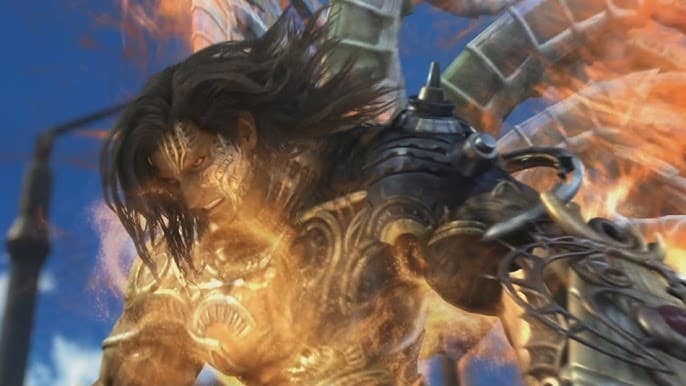
Final Fantasy XII may have its detractors, but even if you happen to dislike the game’s MMO-leaning approach to combat, it’s still hard to call it’s main antagonist a disappointing villain. As the heir apparent to the Arcadian Empire, Vayne is the embodiment of dynastic ambition. He puts on a facade of being a diplomatic statesman working in service of his father the Emperor all while secretly biding his time and plotting to stage a coup. Even worse, he convinces his father to kill his other two brothers under the accusation that they are plotting to overthrow the Emperor (which Vayne actually is).
Aside from his truly villainous characteristics, Vayne is a commendable foe just for how capable he is. Not only is he a skilled tactician and military genius, Vayne is calculated and pragmatic. He’s neither the “mad villain” nor “evil deity” trope of past Final Fantasy games. Instead, he settles on being a singularly-focused, power-hungry adversary who will stop at nothing to achieve his goal, including killing his own father.
10. Kuja (Final Fantasy IX)
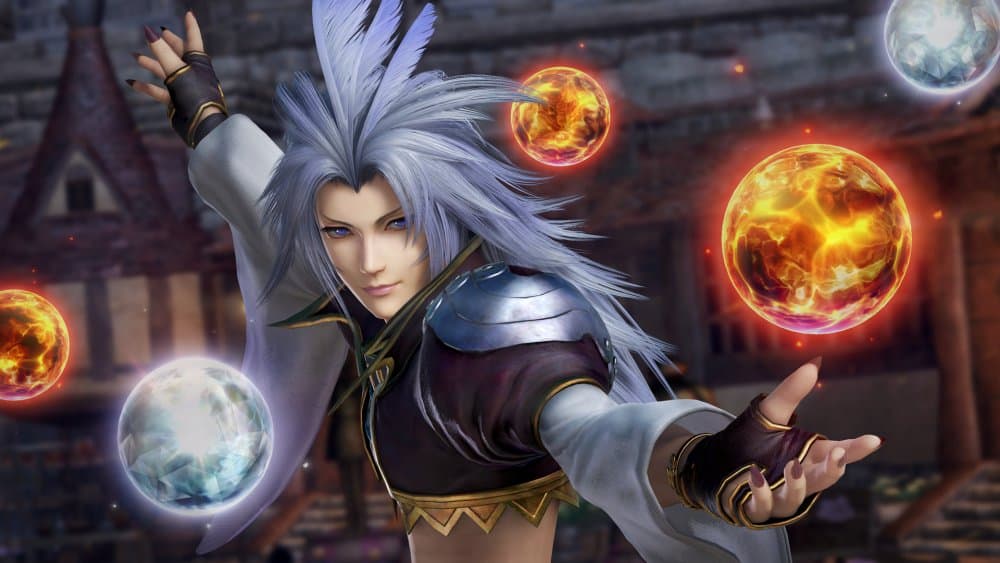
Breaking the top 10 of the best villains in the series is Final Fantasy IX‘s main antagonist Kuja. The youngest adversary of any game in the series, Kuja is a refined noble and powerful mage who perfers to work from the shadows in the early hours of Final Fantasy IX before finally revealing himself to be Zidane’s foe. Part of what makes Kuja great is how players eventually learn that he is Zidane’s genetic rival, albeit one without a soul. Because of this, his jealousy and rage at Zidane’s humility and superiority drive him to commit acts that would prove otherwise, all of which fail.
Truly, though, the real villain in all of this is Garland, whose meddling with the lives of Kuja and Zidane set both of them on their path of conflict. Kuja might not be an empathetic villain, but he’s certainly a sympathetic one. It’s hard to not feel sorry for how he was created and tossed aside, only so that Garland could replace him with the superior genome in Zidane. Beyond his motivations, though, Kuja is a great villain for his lavish appearance, flamboyant behavior, and fondness for speaking in metaphor.
9. Ultima (Final Fantasy XVI)
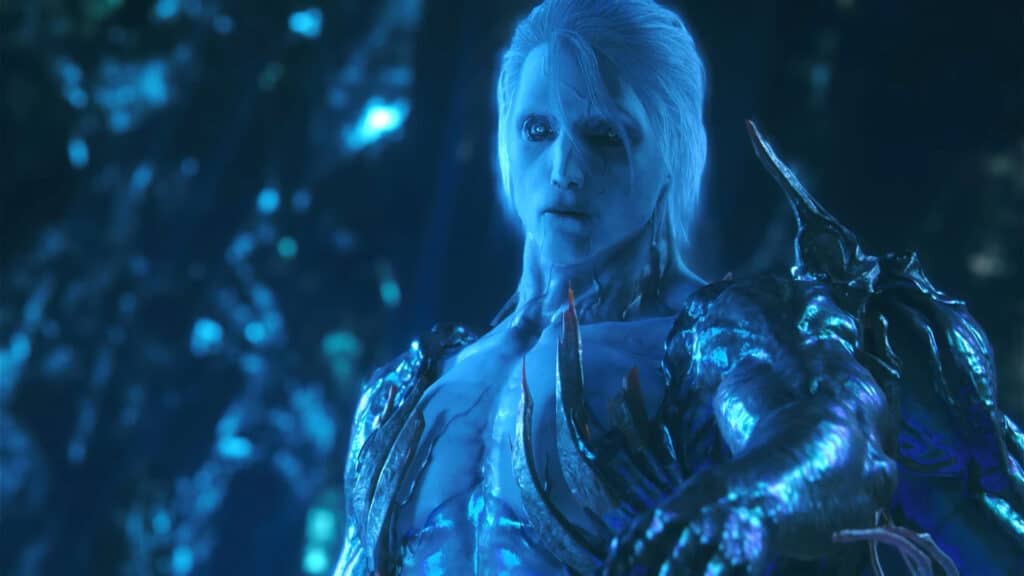
Final Fantasy XVI has arguably one of the best stories of any mainline Final Fantasy game, and a pillar of that story is its incredible main villain: Ultima. The last of a dying race of godlike beings who create both magic and the crystals, Ultima enters a long slumber to cure a sickness that spread to himself and all of the humans on their first attempt at bestowing lesser creatures with the gift of magic. Of course, history is doomed to repeat itself, with the corruption spreading again and leaving Ultima with (seemingly) no choice but to manipulate the most powerful humans to speed-up the process of his resurrection.
Ultima is the cold and unfeeling antithesis of what most would imagine when thinking of a creator deity, which is precisely what makes him compelling. He is not the benevolent and all-loving god who acts as the figurehead of a great religion, instead is a selfish and vain deity that only desires survival above all else. He’s the exact opposite of the selflessness and self-sacrifice that drives every decision Clive makes, helping to cement him as the perfect foil to one of the series’ best heroes.
8. Exdeath (Final Fantasy V)
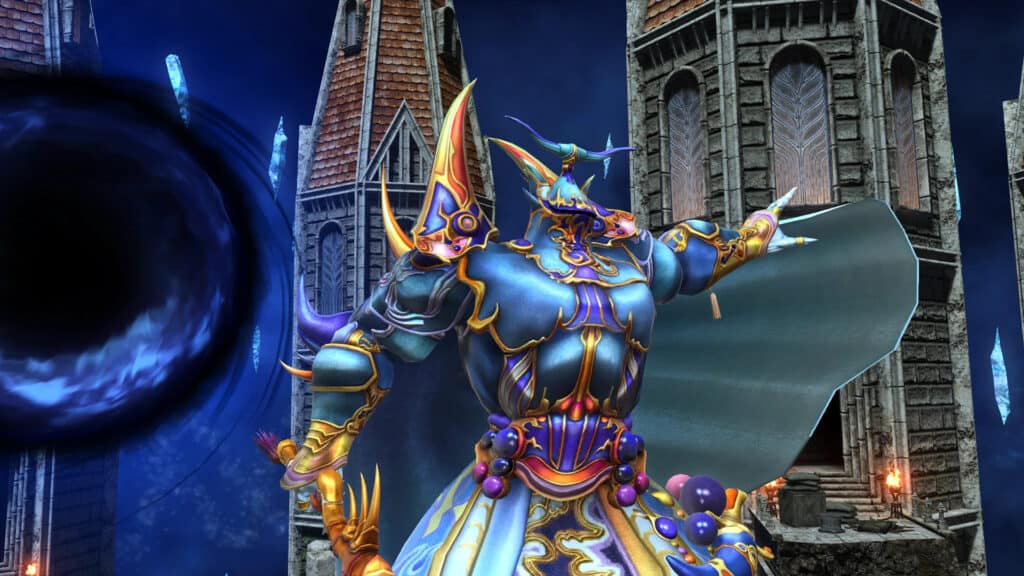
Sentient evil tree wizard. Let that sink in for a moment. Final Fantasy V is still regarded by many fans as one of the best games in the series, thanks in part to its whimsical and lighthearted narrative when compared to its predecessor and direct sequel. Part of that willingness to not take itself too seriously manifests in its excellent villain Exdeath, who comes off looking like Golbez from Final Fantasy IV, desiring a return to the Void like the Cloud of Darkness from Final Fantasy III, and ultimately turning out to just be a really evil version of The Giving Tree. This villain is all over the place, and it’s precisely because of that that he’s one of the series’ best.
It’s because Exdeath is a send-up of past series’ villains that he’s so memorable. Part satire and part genuine threat to the player, Exdeath is somehow always one step ahead, making every move the party takes begin to feel futile after a certain point. However, in spite of his continual one-upping the part, our heroes never lose sight of what’s at stake, and they persist in being a capable thorn in Exdeath’s side. Exdeath is a great villain because no matter how much he wins, his victories only serve to eventually shoot him in the foot (or, cut him off at the branch).
7. Seymour/Yu Yevon (Final Fantasy X)
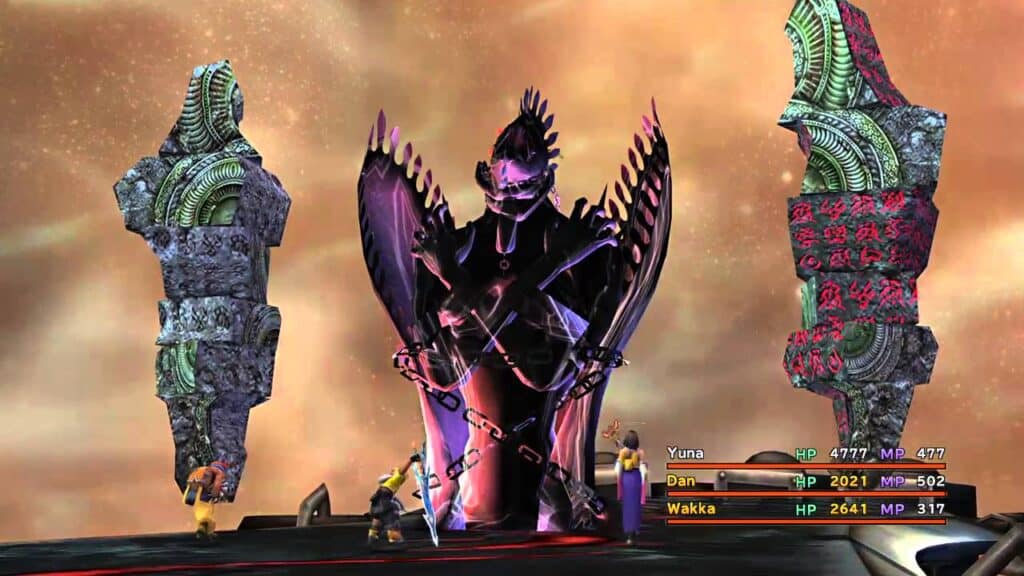
While it’s true that Seymour and Jecht are also primary antagonists in Final Fantasy X, the top villain in one of the best Final Fantasy games undoubtedly goes to Yu Yevon, mostly for how impactful his every action is over the course of Final Fantasy X‘s narrative. In seeking to preserve ancient Zankarand at the height of its power, Yu Yevon creates Sin to continually destroy any potential hostilities, throwing the world into a never-ending cycle of conflict against Sin in the process. This also unknowingly creates Tidus, who still vows to stop Yu Yevon and Sin despite the revelation that, without Yu Yevon’s summoning, he will cease to exist.
While Seymour and Jecht are much more fully-characterized antagonists that have personal stakes with the heroes of Final Fantasy X, the faceless evil of Yu Yevon (and his floating fortress of armor, Sin) is an example of the “evil deity” villain trope from Final Fantasy done right. By the time players enter their battle against Yu Yevon, it’s likely that they’ve grown connected to Tidus and his companions, making the final push and climactic battle against the ancient summoner a bittersweet moment that gives way to an emotional finale.
6. Ultimecia (Final Fantasy VIII)
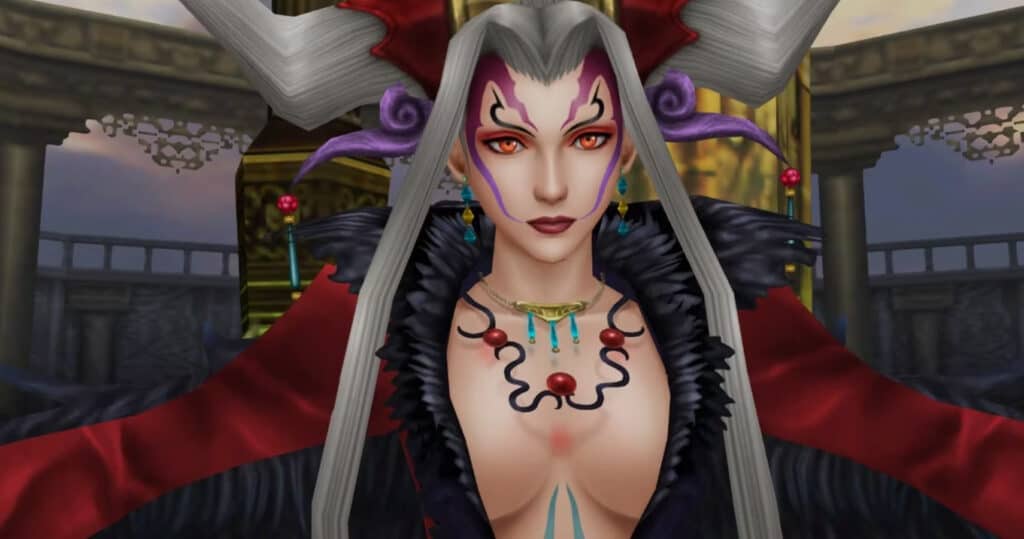
It’s surprising that there aren’t more female antagonists in Final Fantasy titles, especially when some of the examples that there are rank among the series’ best. Ultimecia from Final Fantasy VIII is absolutely one of the series’ best villains, despite having an incredibly tough act to follow in Final Fantasy VII‘s big bad. Ultimecia’s desire to compress time and space to a singular point, allowing herself to become a god in the process, leads her to send her consciousness back through time and disrupt reality enough to create two branching timelines from that moment.
It’s Ultimecia’s willingness to use the very dimension of time as her plaything that makes her a powerful and evil foe, but what truly makes her a great villain are her striking appearance and incredible dungeon. As the only outright female antagonist in the series, Ultimecia has an instantly recognizeable style and appeal, along with her eponymous castle. Ultimecia’s Castle is one of the best final dungeons in the series, absolutely dripping with character and foreboding around every corner. It’s the closest the Final Fantasy series ever got to having the Spencer Mansion from Resident Evil as a dungeon.
5. Golbez/Zemus (Final Fantasy IV)
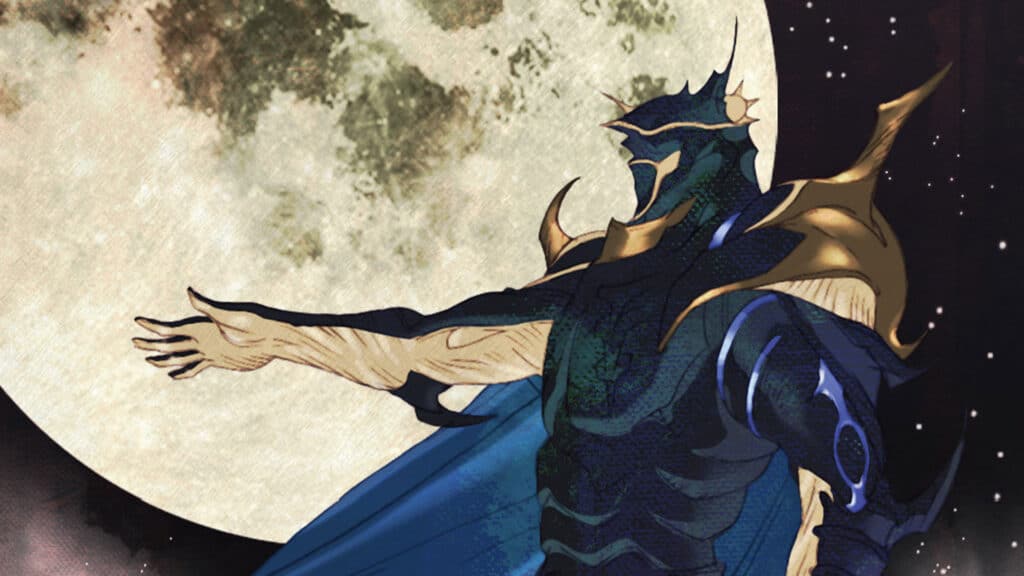
Although the heroes eventually learn that a more sinister and primordial force is at play behind the scenes, for the majority of Final Fantasy IV the main antagonist is Golbez. Main villains in the Final Fantasy series typically have some kind of connection to the protagonist, but very rarely is that connection familial. As the brother of Cecil, the party’s adventure to stop Golbez from acquiring the crystals and opening a path to the moon takes on a level of personal stake that very few Final Fantasy games can match.
In addition to his excellent importance to both the narrative at-large and the character development of the protagonist, Golbez is an ultra-powerful threat that the player learns (very early on) is not to be trifled with. His striking black armor and pet shadow dragon immediately call to mind Cecil’s past as a Dark Knight, and his incredible magic powers make short work of the party on multiple occasions. Perhaps best of all, though, is that Golbez eventually seeks to correct the error of his ways in the course of Final Fantasy IV‘s narrative, showing that it’s never too late for someone to seek redemption.
4. Ardyn (Final Fantasy XV)
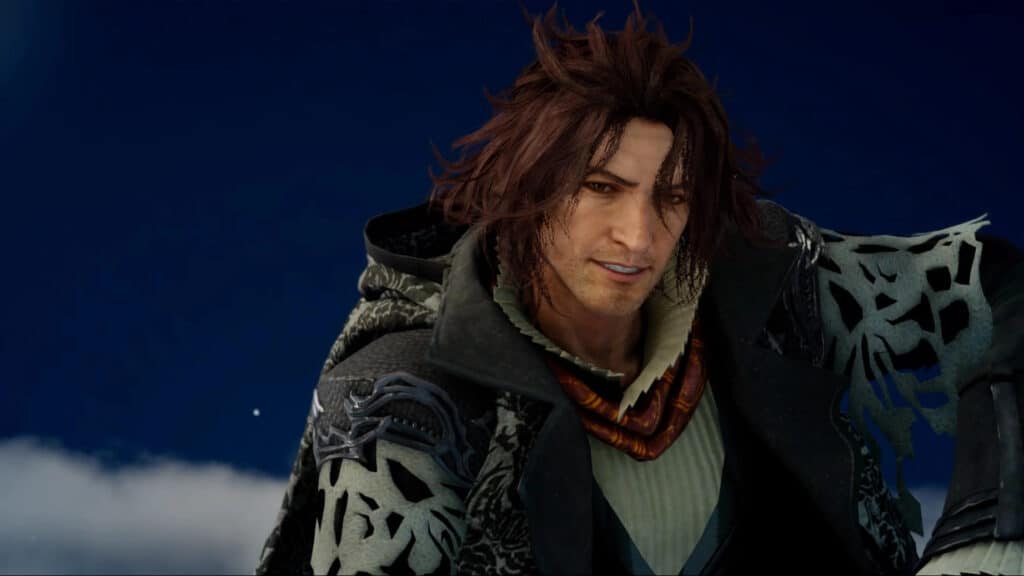
Say what you will about Final Fantasy XV, but despite the game’s issues, it’s got one of the absolute best villains in the series in Ardyn. This suave and charismatic antagonist has one of the more tragic backstories of any series’ villain, and it’s arguable that Final Fantasy XV is just as much about Ardyn as it is about Noctis. Finally learning the reasons behind Ardyn’s transformation from hero to villain and how he was driven to insanity make him one of the more sympathetic villains on this list, if not relatable in certain aspects.
He also happens to be a compelling foe and formidable combatant, capable of going toe-to-toe with Noctis and others wielding virtually any weapon. He has style, he has panache, and he’s got one heck of a wit to back it all up. Ardyn may be a bit of a trickster, but underneath all of his grandstanding and mad-villain monologues are the heart and soul of what amounts to a good person caught in the worst of circumstances.
3. Emet Selch (Final Fantasy XIV)
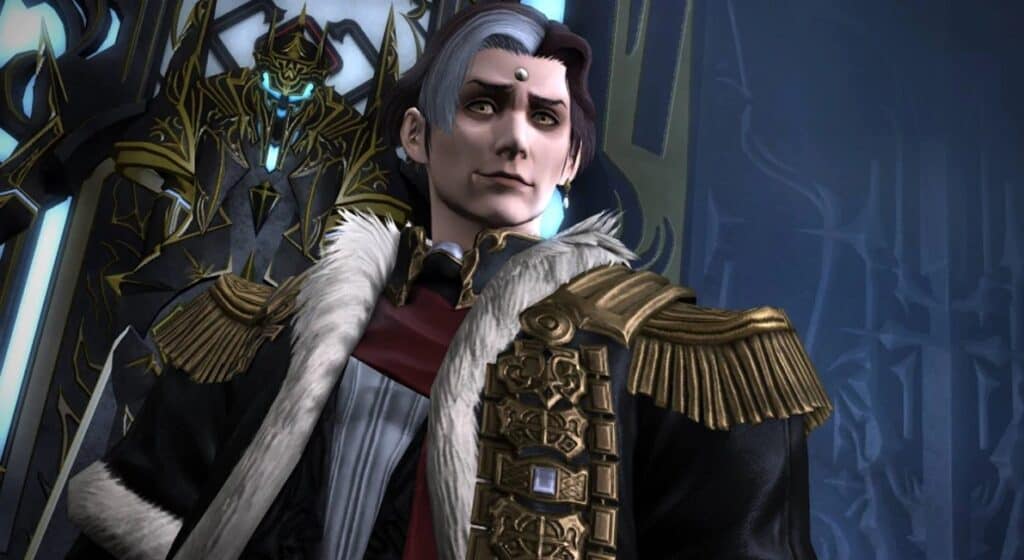
One of the benefits to Final Fantasy XIV‘s 10 years of existence is that the story continues to evolve with every new expansion, offering even greater layers of development and characterization to its protagonists and antagonists. Among these, Emet Selch stands out as not only the absolute best villain in Final Fantasy XIV but also a strong contender for the best villain in the entire franchise. His witty quips and undeniable sense of charm aside, Emet Selch has one of the more relatable goals of any villain in Final Fantasy and is a truly sympathetic character.
Credit is due in large part to the writers and voice actors of Final Fantasy XIV, who have helped to bring Emet Selch to life over the years. Ultimately the lore surrounding the villain makes him one of the best fictional antagonists of any medium. The only reason he gets beat out by the other two villains on this list is due to the consistency in how he’s been portrayed and developed over the years, with it being mostly since the Shadowbringers expansion that Emet Selch has transformed into one of the series’ best villains.
2. Sephiroth (Final Fantasy VII)
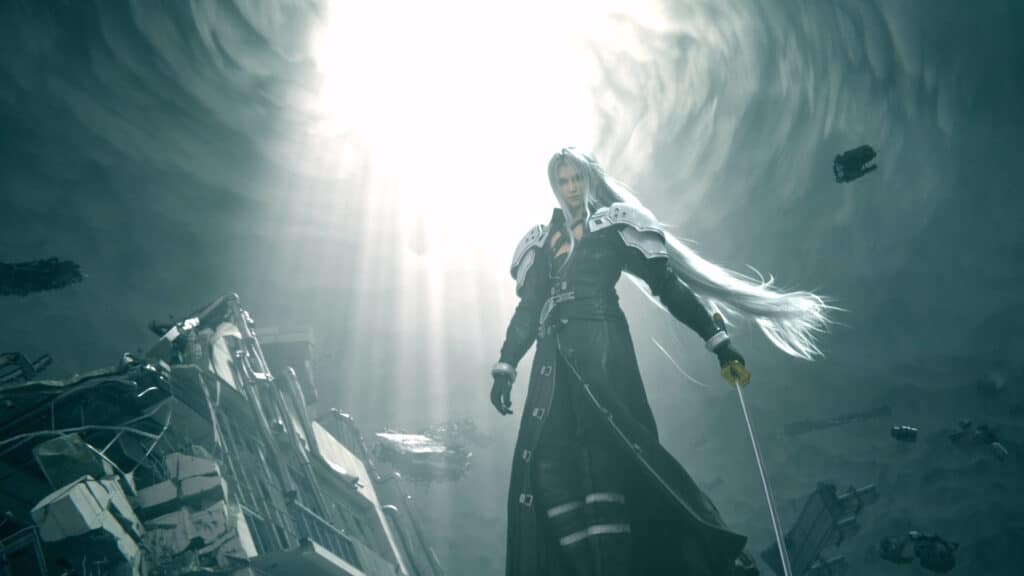
Super-soldier. Master swordsman. Genetically-engineered deity. Whichever of Sephiroth’s qualities and characterizations you settle on, he’s undeniably one of the most compelling characters in the entire Final Fantasy series. That he is a villain and the primary antagonist to one of the series’ best protagonists only serves to elevate his status higher, but truthfully Final Fantasy VII does plenty of that for us before Sephiroth even has a single second of screen time. In terms of how to properly build up a villain and the mythos surrounding them, Final Fantasy VII expertly foreshadows his importance before we ever glimpse him.
From the moment players see his sword stuck into the back of President Shinra high atop the Shinra building, the game begins to build a sense of unease and tension that few other villains in the series are capable of eliciting. When we eventually learn the truth behind his creation along with his and Cloud’s backstory, he goes from being a compelling villain to one of the best and most iconic in all of video games. Sephiroth wants to return the world to what he views as its “rightful” owners, reversing centuries of destruction and decay at the hands of humans. An admirable goal, to be sure, but one that is flawed in its execution.
He’s already a compelling and enigmatic villain throughout Final Fantasy VII‘s runtime, but it’s his taking of an innocent life that instantly propels him to a legendarily despicable status. Aerith represents hope, as well as the counterpoint to Sephiroth’s ramblings as an Ancient who wishes to live side-by-side with humans and work together for the betterment of everyone. Her life snuffed out, Cloud and his companions aren’t just saving the world; they’re now getting revenge against the heartless evil who took their friend.
1. Kefka (Final Fantasy VI)
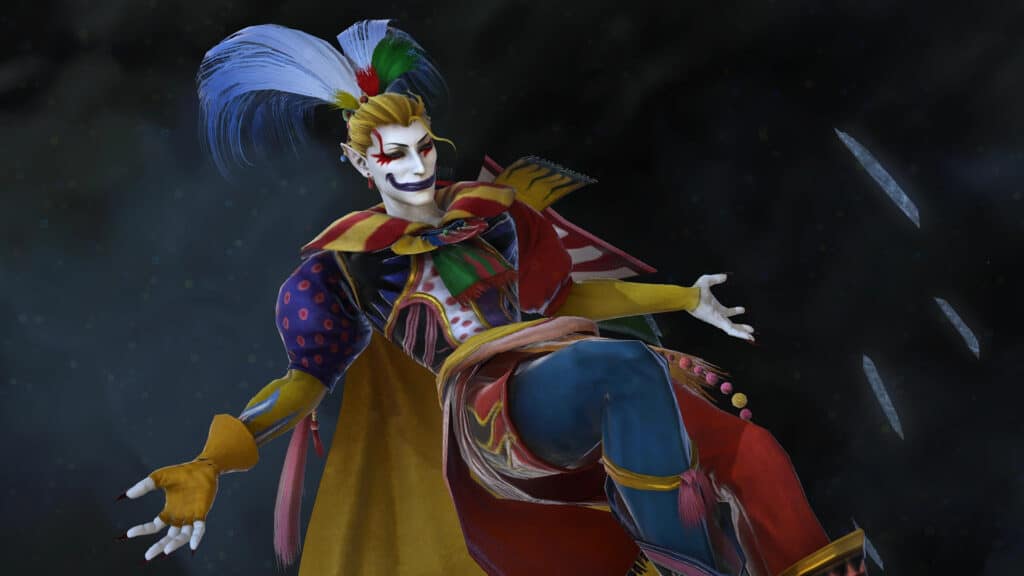
The only possible villain in the Final Fantasy series to beat out both Emet Selch and Sephiroth is none other than Final Fantasy VI‘s Kefka. Kefka is chaos personified; a mad-villain jester whose mind is warped from years of magic infusion. His soul and heart were already twisted toward an all-consuming desire for power before becoming infused with magic, but afterwards his psyche breaks in an irreparable way, leading him to become a psychopathic madman who simply wants to watch the world burn.
And watch it burn he does, as Kefka is the only villain in the entire Final Fantasy series to truly “win”. This victory acts as a major pivot point for the events of Final Fantasy VI, with the second half of the game spent trying to find a way to defeat him after he’s effectively become a god. Kefka succeeds in his goal, usurping the Emperor and achieving ultimate power while simultaneously destroying the world. When the party finally confronts him a second time, he makes it very clear why he’ll never relent: he wants to destroy hope.
With his jester-like appearance and maniacal laugh, it can be hard to not draw comparisons between Kefka and Batman’s Joker, but Kefka goes to lengths that would potentially make the Joker think twice. He poisons an entire nation of people out of spite, willfully destroys the life of anyone who opposes him, and has absolutely zero redeeming qualities. He’s not relatable, he’s not sympathetic, and his motivations are to purely cause pain. A true, dastardly villain.
